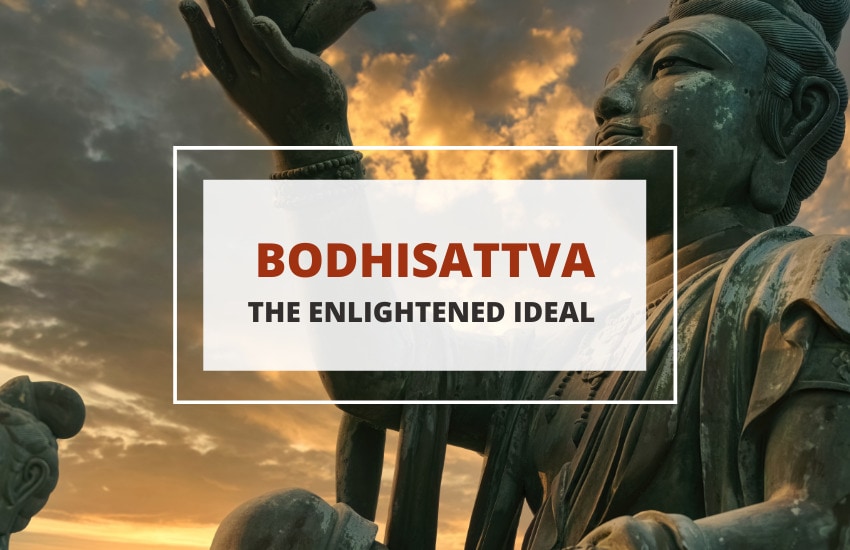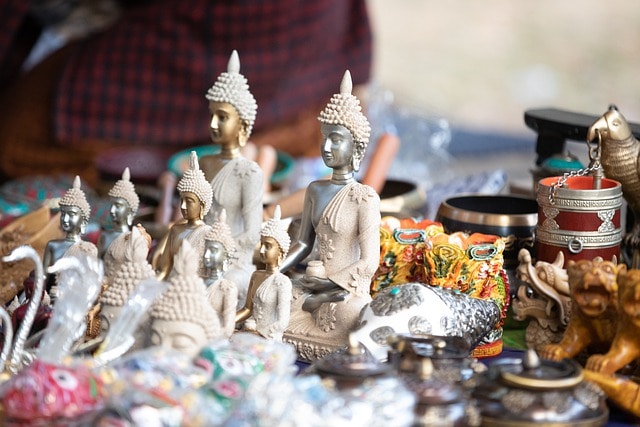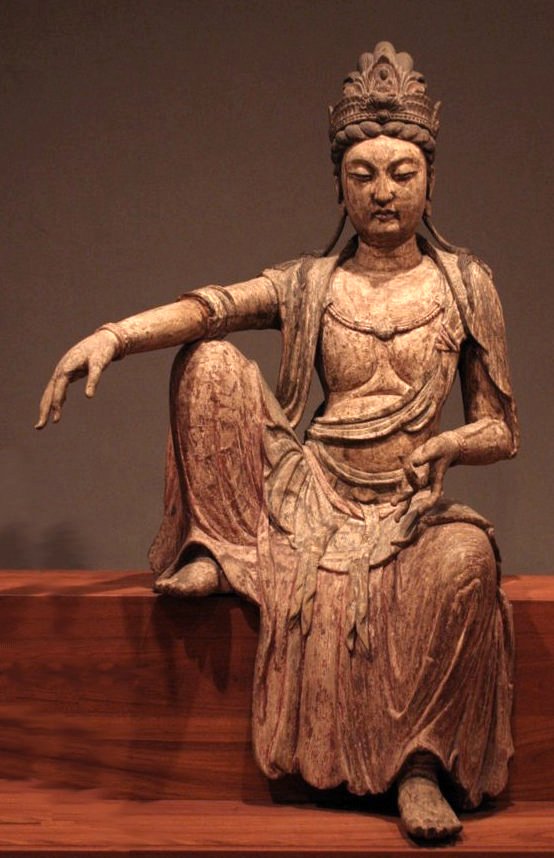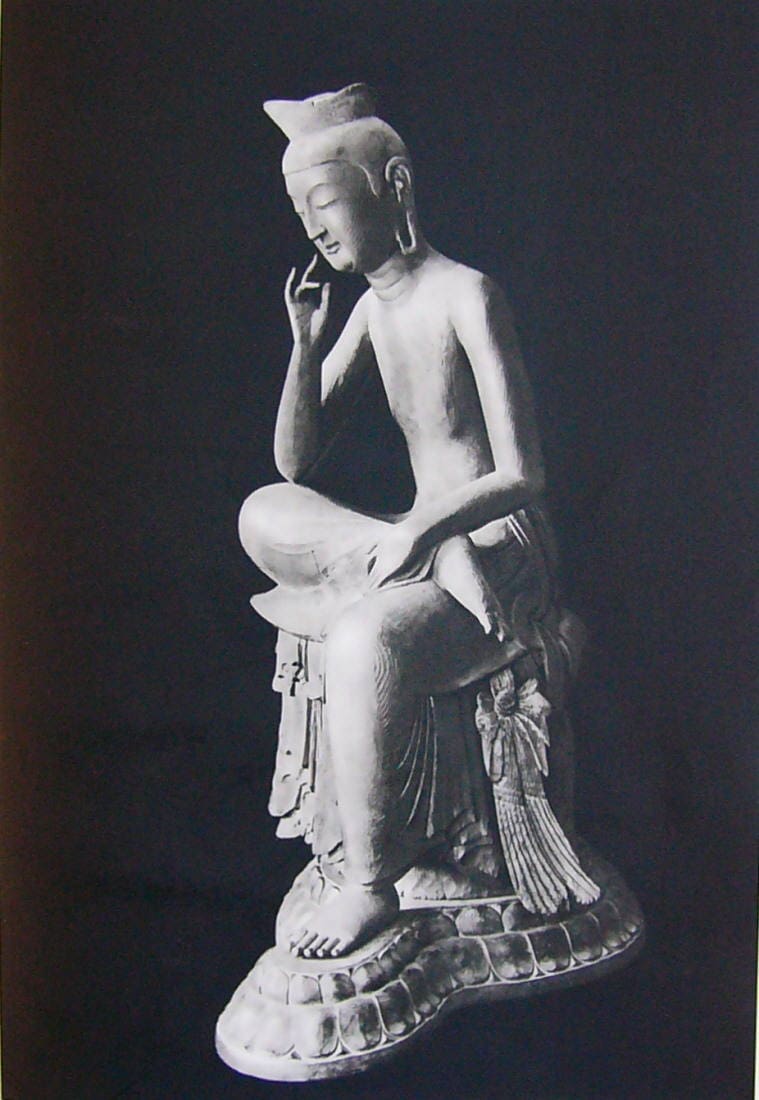
Table of Contents
As you start delving into Buddhism and its various schools of thought you’ll soon start encountering a curious term – bodhisattva. What’s quite peculiar about this term is that it’s used for many different people and beings – gods, the common folk, royalty, traveling scholars, and even incarnations of Buddha. So, what exactly is a bodhisattva?
Who or What is a Bodhisattva?

In Sanskrit, the term bodhisattva quite literally translates as One whose goal is awakening. And this is pretty much the easiest way to explain what a bodhisattva is – anyone who strives toward awakening, nirvana, and enlightenment. However, that explanation falls short when you consider the many different schools of Buddhism and their varying and often contrary views and beliefs.
The First Bodhisattva
If we are to find the original meaning of the term bodhisattva we ought to look for its historical beginning. As far as we can tell, that lies in Indian Buddhism and certain subsequent traditions such as Sri Lankan Theravada Buddhism. There, the term bodhisattva refers to one specific Buddha – Shakyamuni also known as Gautama Siddhartha.
The Jataka stories that detail Shakyamuni’s life, go through the various steps he took to reach Enlightenment – his strive to better his morality, to acquire more wisdom, to focus on altruism rather than egoism, and so on. So, according to Theravada Buddhism, the bodhisattva is the Buddha Shakyamuni on his road to becoming Buddha.
A Broader View

Many other Buddhist traditions take Shamyamuni’s story from the Jataka and use it as a template to describe every Buddha’s road to Enlightenment as an example of a bodhisattva. The Mahayana Buddhism school that’s popular in Japan, Korea, China, and Tibet, for example, believes that anyone who’s on their road to awakening is a bodhisattva.
This is a very wide use of the term as it’s not even limited to teachers, monks, and wise men, but to anyone who’s taken the vow to try and reach Enlightenment and one day become a Buddha. This vow is typically called the bodhicittotpada and is a vow anyone can take.
From that point of view, everyone can be a bodhisattva if they so choose. And Mahayana Buddhism does indeed believe that the Universe is full of countless bodhisattvas and potential Buddhas because many have taken the bodhicittotpada vow. Not all will reach Enlightenment, of course, but that doesn’t change the fact that you remain a bodhisattva as long as you continue to at least try to reach the Buddhist ideal.
Celestial Bodhisattvas

The fact that everyone can become a bodhisattva doesn’t mean that all bodhisattvas are equal. Most Buddhist schools believe that between the several Buddhas and the many “beginning” bodhisattvas are those who’ve been on the road for so long that they are almost at the cusp of becoming a Buddha themselves.
Such people are usually believed to have acquired various spiritual and magical abilities over the centuries. They are also often viewed as vessels imbued with celestial aspects and divinities. In Buddhism, such celestials are usually associated with specific abstract concepts such as compassion and wisdom. So, such an “advanced” bodhisattva has effectively opened themselves for those celestial aspects as a part of their road to becoming a Buddha. In a way, these bodhisattvas are often viewed almost as “gods” from a Western point of view.
In the most functional sense, these celestial bodhisattvas are viewed and worshipped almost as Buddhas. Many of their identities are well-known and revered among Buddhists almost on the same level as the Buddhas themselves.
After all, a bodhisattva that’s that close to Enlightenment is not only almost certain to reach it but he or she behaves as a Buddha does – their immeasurable compassion drives them to assist the common folk, they use their near-infinite wisdom to help others find their way, and they are also capable of miracles thanks to their supernatural abilities.
Are Bodhisattvas More Merciful and Helpful than the Buddhas?
Another view of the bodhisattva term views such people as not just on their way to becoming a Buddha but as people who are more devoted to helping others than an actual Buddha. This understanding seems particularly popular in Chinese Buddhism.
The idea behind this is two-fold. On the one hand, a bodhisattva is actively trying to reach Enlightenment and one of the main ways to do this is by devoting one’s life to helping others. So, a bodhisattva is encouraged to be selfless and altruistic if they are to continue their progression – such requirements are not necessarily placed on a Buddha as they are a person who has already achieved Enlightenment.
Additionally, a component of reaching Enlightenment and becoming a Buddha is reaching a state of being completely divorced from your ego and your Earthly and human possessions and interests. But that same state can be viewed as something that further separates a Buddha from humanity whereas a bodhisattva is still more closely tied to their fellow man.
Famous Bodhisattvas

In addition to Therevada Buddhism’s Shakyamuni, there are several other well-known and worshipped bodhisattvas. Many of them are thematically and theologically tied to certain spiritual concepts such as wisdom and compassion. One popular example whom we’ve talked about before is the Chinese bodhisattva Avalokitesvara, also known as Guan Yin – the bodhisattva of compassion.
Another very popular bodhisattva in East Asia is Dharmakara – a past bodhisattva who, once he had fully realized his vows, managed to become the Buddha Amitabha – the Buddha of the Western Pure Land.
Vajrapani is another popular and very early bodhisattva. He used to be the guide of the famous Guatama Buddha and he symbolizes his power.

There’s also the bodhisattva Maitreya who is believed to become the next Buddha. He is expected to reach Enlightenment in the near future and to start teaching people pure Dharma – the Buddhist cosmic law. Once he accomplishes this, Maitreya will become the next “main” Buddha after Guatama/Shakyamuni.
The Tara Goddess of Tibetan Buddhism is a female bodhisattva who’s also on her way to reaching Enlightenment. She is quite controversial in that some Buddhist schools deny that women are able to ever become a Buddha. Tara’s story details her struggle with Buddhist monks and teachers who pressure her to be reincarnated into a man if she wants to become a Buddha.
Other Buddhist schools have even more famous female bodhisattva examples such as Prajnaparamita, the Perfection of Wisdom. Another example would be Cundi, Juntei, or Chunda, the Mother of Buddhist Deities.
Symbolism of the Bodhisattva
Simply put, a bodhisattva is the missing link between the everyday person and a Buddha. These are the people who are actively climbing the road toward Enlightenment, whether they are still at the beginning of the trek or almost at the peak.
Very often when we talk about the bodhisattvas, we talk about them almost as divinities. And this view of them is indeed valid as they gradually become vessels of the cosmic divine as they get closer and closer to becoming fully awakened. However, the true symbolism behind the bodhisattva state is that of commitment to the road of Enlightenment and its many challenges.
In Conclusion
Sitting between the mundane and the divine, bodhisattvas are some of the most important and fascinating figures in Buddhism. While becoming a Buddha is the ultimate goal in Buddhism, being a bodhisattva is the long and grueling road toward this goal. In that sense, bodhisattvas are much more representative of Buddhism than Buddhas themselves.








